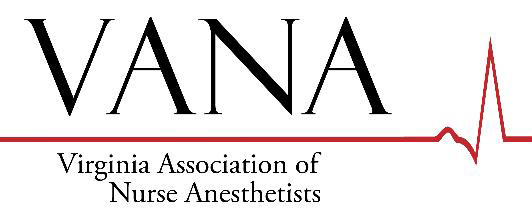VANA and the Military: Derek Owens
For this edition of The Monitor, the VANA Communications Committee spoke to Derek Owens about his journey within the military as a CRNA and most recently, his service as an instructor at Mary Baldwin University. If you would like to share your military or instructional experience with The Monitor, please reach out to Katie Jesaitis at [email protected].
Years ago, when I first began my journey as a CRNA I never expected life to take the many twists and turns it has – in fact, if you had told me on my first day of nursing school that I would be sitting here today as an instructor, I likely would not have believed you! But following each opportunity and allowing my passion for patient care to guide me has led me to some amazing places and given me some incredible experiences.
As a recent graduate of TCU, I initially chose to enlist in the Navy Reserves alongside my future wife, Steffanie, who was progressing through medical school and also making the choice to enlist.
I learned so much during my time in the reserves. I was working a day job and was being deployed regularly all over eastern Europe, Alaska, Africa and beyond. Quickly, what began as medical deployments grew to include additional responsibilities and operational assignments.
Anywhere in the world where you may find the military, or a military medical team, you’ll find anesthesia. For that reason, even as a member of the reserves I found myself regularly being deployed. I would recommend it to absolutely anyone, but as a nurse anesthetist we hold a very specific skill set that is difficult to replicate.
After three years in the Reserves, my wife and I were married and I transitioned to active duty. We spent time practicing together at a base in California before leaving to take an overseas billet in Okinawa, Japan supporting the U.S. presence in the South China Sea. Most importantly, Japan holds a special place for our family because it’s where we had our twins.
After our time in Japan, Steffanie was ready to step into a fellowship program in Sacramento, furthering her education. With no naval bases within 500 miles, it was time for me to step away to help care for our kids, including our third son who was born once we arrived back in the United States. I took a job as Chief CRNA at a practice in Stockton, CA, which is a fairly violent area – it was an interesting place to be practicing, and I learned a lot. As a collaborative environment we had about 50 CRNAs in-practice and although it was one of my most difficult roles to-date, the ability to learn and grow alongside so many others was eye opening.
We found ourselves in Arizona for a year right as I started hearing about a Virginia based faculty job but the timing just wasn’t lining up, despite my curiosity and interest. Incredibly, all things happen in their own time and eventually everything fell into place: the job still available, my wife found a Richmond based job that she loved as well, and we made the jump.
The Navy has a very clear culture; we’re all taught how to act. CRNA school, in many ways, is no different. It is a professional school with professional guidelines and I’m happy to contribute to the development of the culture of CRNAs in the workforce today and into the future.
I see that learning and development every day when I go to work and it has become my favorite part of being an instructor. I love watching concepts connect for students and knowing that a lesson we learned in-class is going to stick with them over a lifetime of patient care and practice.
I had served briefly as a flight instructor early in my career, but serving as a CRNA instructor is new to me and I’m learning every single day. I’m confident the students are teaching as much –or more – as I’m teaching them, and I love that we can work together to collaborate and solve problems. My goal is always to teach as a peer, because as a servant leader it’s my responsibility to remember that although I’m leading from the front and not asking anything of my students that I wouldn’t do myself, I also know that in a matter of weeks or months these students will graduate and become my peers in the hospital. There can’t be a hierarchy in the classroom that limits conversation, discussion, questions or understanding.
Just as my students are leaders in the classroom, I would encourage any of them to get involved in VANA, at every level. My biggest advice for young people is to get involved in leadership as young as possible, because every one of us makes mistakes and if you haven’t “tested the waters” and tried out leadership roles at all levels and learned to lead and make decisions, you won’t be prepared when it’s your opportunity to step into a much larger leadership role. By getting involved now and practicing leadership, you’ll be a stronger follower and team player and you’ll be prepared to step up and lead your team when the time comes.
My path to teaching at Mary Baldwin has been circuitous, but I’m grateful that within the shifts and adjustments I’ve been able to lean on my family and adapt to every change. I don’t know what the future holds but I’m loving where we are today and look forward to every new adventure.

